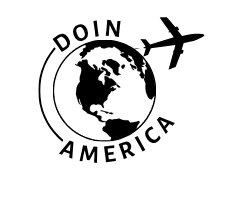Guatemala Remote Team Productivity: 7 Clear Digital Communication Steps
Picture this: You’re leading a high-stakes project with a remote team scattered across time zones—some based near the majestic Lake Atitlán, a few in Guatemala City’s busy tech corridors, and others calling in from coffee-rich highlands. The project is ambitious, the goals are aggressive, and, oddly enough, what repeatedly stalls progress isn’t talent or motivation—it’s the invisible tangle of miscommunication. Weeks ago, during a collaborative sprint for a fintech startup (one operating partly out of Antigua), I witnessed this firsthand. What should have been fluid progress felt like trudging through molasses. Messages were missed, priorities blurred, and the sense of shared urgency evaporated. If you’ve been there (and I suspect you have), you already know: digital communication isn’t just an efficiency booster for remote teams—it’s the glue holding everything together1.
So why do Guatemalan teams, or teams working with Guatemalan members, sometimes struggle to click into that frictionless, productive groove? Honestly, a lot of it comes down to habits—tiny daily practices around digital communication that build, over time, into something massive. In my experience consulting with local businesses and Latin American branches of global SaaS firms, I’ve learned that streamlining those habits translates to measurable productivity gains. I’m still evolving my approach (always is the case in remote management), but certain steps keep proving reliable—across industries, hierarchies, and individual personalities.
Start small. Massive overhauls rarely stick, particularly in already stretched teams. Instead, think of “tiny habits” that reshape culture—one step at a time.
Why Digital Clarity Matters for Guatemalan Remote Teams
Back in 2020—when remote work went from novelty to necessity overnight—I watched companies in Guatemala scramble to keep work moving. Some, like the logistics startup I advised in Quetzaltenango, tried to mimic in-person office traditions through clunky daily all-hands video calls. Others switched to endless email chains. The results? Mixed at best. What’s striking is that, although remote technology is global, habits remain local—a truth that caught some leaders off guard.
The stakes for clear digital communication are particularly high for Guatemalan teams. Why? Country-wide internet speeds remain inconsistent, digital literacy varies regionally, and cultural norms around politeness can discourage direct criticism—leading to misunderstandings that rarely get voiced out loud2. Meanwhile, demand for international partnership and outsourcing keeps rising. If your team builds solid digital habits now, you’ll sidestep the friction that drags projects off course.
Guatemala’s internet penetration stands at just under 70%, with a significant urban-rural digital divide. In regions like Petén and Sololá, internet access can still be a major challenge for remote team members, affecting how and when they’re able to communicate—a crucial context when setting digital norms.
Which brings me to today’s focus: seven easy, high-leverage steps—shaped by regional realities and global best practices—that any team with Guatemalan members can implement for faster, clearer, and more productive collaboration. Ready to see results that actually last? Let’s dive in.
Step 1: Standardize Communication Channels
Let me be frank—I used to roll my eyes at “channel standardization.” Sounded bureaucratic. But I’ve consistently found that when everyone knows exactly où to check for what—be it urgent updates in Slack, project handoffs in Trello, or meeting notes in Google Docs—the cognitive load drops. Suddenly, you’re not asking “Where was that decision posted?” five times a day. For Guatemalan teams, where WhatsApp is ubiquitous even for business (often crossing over with personal chats), channel clarity is even more essential3.
- Designate core platforms for each communication type—e.g., Slack for quick questions, email for formal approvals.
- Document channel expectations and revisit them quarterly (honestly, I missed this for years—big mistake).
- Encourage everyone to mute or exit irrelevant WhatsApp groups during work hours—it’s a constant distraction otherwise.
Hold on—does this feel restrictive? It shouldn’t. Standardization is about making life simpler, not stifling. You’re just making the path to information frictionless.
Step 2: Master Remote Meetings (the Guatemalan Way)
I’ll admit, I used to think more meetings equaled more collaboration—especially early in the remote era. What really strikes me, reflecting on dozens of team retrospectives, is how easily those sessions devolved into “zombie” video calls: attendees half-engaged, basic points getting skipped, and no one really sure what happened or what mattered. Sound familiar? In Guatemalan teams, where direct confrontation is sometimes culturally avoided and ‘sí’ can mean anything from “yes” to “I heard you” (but not always “I agree”), structured meetings become more—not less—important4.
Assign a “meeting translator”—someone to call out action items and clarifications before closing. In our last HR strategy session, that simple tweak boosted accountability overnight.
- Always circulate a one-page agenda beforehand (in both English and Spanish for bilingual teams).
- Use video—audio-only increases risk of misreading intent across languages and cultures.
- Record sessions for those with unstable internet (a reality in rural areas).
One correction to my earlier approach—I underestimated the value of post-meeting summary notes. These aren’t bureaucracy; they’re a lifeline for distributed teams.
Step 3: Respect Time Zones and Schedules
Let me step back for a moment. I’ve lost track of how many remote projects have suffered—or outright stalled—due to calendar chaos. Guatemala, sitting steadfastly in Central Standard Time (no daylight savings, mind you), often interfaces with teams in the US and Europe. What that means in practice? If you’re not careful, your “urgent” 5:00 PM requests land after hours. I learned this the hard way during a banking software rollout last year—nearly causing a last-minute bug fix to be missed because no one realized our “end of day” was their “dinner time”5.
- Publish a shared time-zone chart for distributed projects (Google Calendar makes this almost painless these days).
- Default meetings to Guatemalan local time but confirm with all participants, especially cross-border teams.
- Respect “quiet hours”—WhatsApp messages at 10 PM should always wait for morning unless critical. (I’ve seen morale nosedive otherwise.)
Guatemala’s business day usually runs 8 AM to 5 PM local time, with lunchtime siestas common in smaller towns. Overlooking these cultural rhythms—especially when managing from abroad—can inadvertently create friction and resentment.
On second thought, I should have established these norms far earlier in my career. They’re deceptively simple but transformative——especially for teams blending urban and rural contributors.
Step 4: Build Feedback Loops That Stick
Do you ever wonder why feedback sometimes feels like it goes in one ear and out the other? I used to chalk this up to personality, but I’ve since realized: communication habit gaps play a huge role. Remote teams in Guatemala, in particular, may hesitate to voice challenges or push backs in group settings—often due to cultural norms around hierarchy and respect6. That can subtly stifle innovation.
Implement anonymous pulse surveys biweekly (even a one-question survey) for honest input. After trying text feedback forms versus open video discussions, our team saw response rates jump by 40% with private digital options.
Also—clarification here—don’t just request feedback. Act on it. The fastest way to kill engagement? Ignore the suggestions you painstakingly asked for.
- Set routine feedback opportunities (monthly, at minimum, for most remote teams).
- Mix formats: short surveys, one-on-ones, and (where appropriate) public praise or gentle course corrections in group channels.
- Close the loop by sharing what’s changed due to feedback—keeps the cycle alive.
Step 5: Champion Asynchronous Work
I’ll be completely honest: embracing asynchronous (async) culture was harder than expected. For years, my gut reaction was “reply ASAP or risk missing out.” Turns out, async actually reduces stress and boosts output—if (and only if) folks know what’s expected in digital communication. In Guatemala, where afternoon power cuts or internet drops still happen, async work is more of a necessity than a luxury7.
- Clearly define response windows (i.e., “Replies within 24 hours” vs. “Immediate for emergencies only”).
- Document key decisions and outstanding questions at each project stage.
- Encourage “working out loud”—brief status updates even if you’re stuck.
The more I consider it, async is a massive equalizer. When done right, it prioritizes clarity over speed, bridges urban/rural divides, and lets people contribute at their own best hours.

Step 6: Use Visual Cues for Clarity
Ever spent too long decoding someone’s vague comment in a group chat? Or cringed at an ambiguous emoji response (“thumbs up” can mean wildly different things depending on culture, by the way)? In project management across Guatemala’s remote teams, visual cues trump plain text—especially when bandwidth is limited and reading between the lines leads to confusion. I’ve learned—after several false starts—that diagrams, color-coded statuses, and screen shares beat written walls of text nearly every time8.
| Outil | Meilleure utilisation | Conseil rapide | Bandwidth Impact |
|---|---|---|---|
| Miro Board | Real-time collaborative brainstorming | Pre-load templates for faster access | Moyen |
| Google Slides | Walkthroughs and updates | Use version history to backtrack | Faible |
| Trello Labels | Tracking project status | Standardize color meanings | Très faible |
Actually, what I should have mentioned sooner: a simple colored status system (red: “stuck”, yellow: “needs review”, green: “done”) in Trello saved our last cross-country product launch. Less back-and-forth, more alignment.
Step 7: Reinforce Cultural Touchpoints
Let’s not kid ourselves—work isn’t just about tasks and deliverables. Remote teams need culture as much as they need checklists. Over the past two years, I’ve witnessed Guatemalan teams thrive when leaders intentionally design for connection: short “café virtual” sessions (not just work talk!), celebrating both local and global holidays, and building rituals that stick—a quick Monday meme contest, a Friday language exchange, whatever lights people up9.
- Schedule non-work chat time (at least monthly)—let people be human, not just resources.
- Integrate Spanish-language or bilingual moments—even for global teams.
- Recognize regional holidays and customs—build the calendar around people, not just projects.
I used to treat these touchpoints as “nice to have.” Now I consider them mission critical, especially when onboarding new hires from different backgrounds.
Action Plan: Putting the Steps into Practice
The question I hear most often is, “Where do I even start?” It’s easy to get overwhelmed (“implement seven habits in a week!”—spoiler: it won’t work). After coaching remote teams large and small, here’s a sequence that’s worked across both startups and mature NGOs:
- Audit current habits—list existing channels, meeting rhythms, and cultural moments.
- Prendre un improvement per quarter. It’s more effective than spreading change too thin.
- Assign a “change champion” for each habit—and rotate the role regularly.
- Use quick check-ins to measure impact (response rates, engagement scores, project velocity).
- Celebrate early wins—small improvements matter.
FAQs: Your Top Questions Answered
Here’s what clients and colleagues ask most about implementing clearer communication for Guatemalan remote teams—along with lessons learned, a few embarrassing missteps, and the wisdom that comes from failing forward:
- How do I deal with uneven internet access?
Focus async habit efforts on areas with poor connectivity; record meetings and provide text alternatives; keep file sizes tiny. When rural connections fail, never shame—work as a team to bridge gaps.10 - Is WhatsApp “professional” enough?
Use it as a supplement, not a replacement, for core documentation. Set clear guidelines. I learned the hard way: urgent file sharing on WhatsApp eventually gets lost in the torrent of memes and family updates. - How do I avoid English-Spanish miscommunication?
Standardize bilingual documents and clarify expectations. Apps like Google Translate are decent, but always have a native speaker review crucial messages. Trust me—one mis-translated idiom can sink an entire deal.11 - What’s the fastest way to see a productivity boost?
Standardize communication channels and clarify feedback cycles first. I’ve seen even skeptical teams see project delays drop 20% in the first month just by doing these two.12
Summary and Lasting Takeaways
I’m not going to claim that seven steps alone will magically perfect every team’s productivity—if only it were that simple. What I can say, after seeing dozens of international collaborations rise (and, yes, sometimes falter) in Guatemala, is that consistent, clear digital communication habits almost always separate great teams from merely average ones. Whether you’re managing a fintech squad in Guatemala City, a rural health project in Huehuetenango, or an international nonprofit with a foot in Antigua and a foot abroad, start with the basics, stick with the small wins, and check your biases at the door every few months—what worked for my last team sometimes falls flat on the next.
Pick just un habit from this list to boost in your current team, and try it for two weeks. Measure what changes—then share the improvement. Repetition, not revolution, is the secret sauce.



